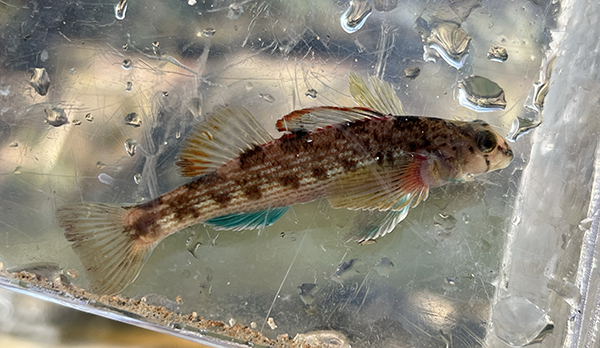Turquoise Darter: A Recovery Story
The Southeastern United States is one of the most biodiverse regions in the world for freshwater fish. Among its rarest species is the Turquoise Darter (Etheostoma inscriptum), a small but fascinating fish found only in the upland streams of the Savannah and Altamaha River basins, including parts of the Clemson University Forest.

Image courtesy of Brandon Peoples
A Fish Built for Fast Water
Turquoise Darters thrive in cool, clear streams with swift currents, living between cobbles and boulders in riffle and run habitats. With no swim bladder, an elongated body, and oversized pectoral fins, they’re built to hug the streambed and resist the flow of water—an adaptation shared by few other fish.
Because they rely on clean, oxygen-rich water and feed on aquatic insects sensitive to pollution, Turquoise Darters are an excellent indicator species for stream health.
From Local Extinction to Reintroduction
Following decades of intensive agriculture in the Upstate, the Turquoise Darter disappeared from the Clemson University Forest. As the land recovered, so did stream quality—but the fish couldn't return to Sixmile Creek on its own. Construction of the Issaqueena Dam in the 1930s had cut off the creek from the larger watershed.
In the early 2000s, Dr. Jeffrey Foltz and graduate student Kevin Kubach reintroduced Turquoise Darters into Sixmile Creek. The effort was a success: the species took hold, began reproducing, and now thrives throughout the creek and its tributaries. Clemson faculty and students continue to monitor and study the population today.
Why It Matters
The return of the Turquoise Darter is more than a conservation win. It’s proof that stream ecosystems can recover. However, the species remains highly vulnerable to runoff and siltation caused by poor land use and stormwater management, particularly outside the Forest’s boundaries.

